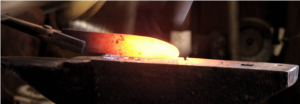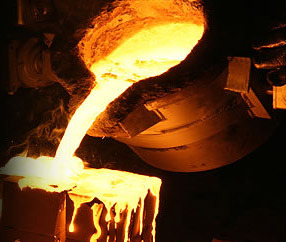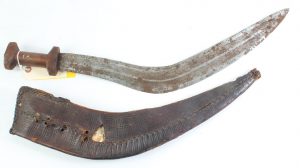The Chemistry Of A Knife Collection
-
the branch of science and technology concerned with the properties of metals and their production and purification.
To the untrained eye, going “knife shopping” might be something that might seem banal, or even a remedial task at best. If you’ve seen one, you’ve seen them all, and they all look the same. (Don’t let them hear you say that, however… they are after all, knives.) However, a brief look deeper might be able to convince even the least “sharp” friend you’ve got that knife research is super important, and that researching the choice of knife might pay its initial investment in blades….. er, spades. It should be noted that the author has a distinct fondness for bladed weaponry/utility and might be very excited about this topic. It should also be noted that this particular piece is in regard to Steel Knife composition as opposed to other archaic metals which might have different rules entirely. Indeed we have come a long way from the Obsidian, Ivory and other bone compositions of Native American Indian tribes and/ or post-Roman Iron. Read on…
While there is simply not enough time to list every single one of the variables involved with knife shopping, today, we cover the chemistry composition of blade selection. You see, different makers of different knives use different metals to craft their unique creations. For example, well-renown and industry giant “Benchmade” uses a very different steel composition than say, “Microtech”, “Spyderco” or “Kershaw.” In addition to that, within companies themselves, different series knives might have different steel ratings. For example, Kershaw’s “economy” line knives might use a different steel composition than say their higher-end combat related items. There are even copyrighted steels that certain industry giants (outside the U.S.) have had manufactured as their own composition. Some of these steels are kept tightly under wrap so as to not expose the secret! It is these subtle differences which make all the difference in the world! Take a look at the following elements and composites used in blade making, and the next set of knives you buy might indeed have to be your last! 
Tungsten- Retains its hardness at elevated temperatures, but still retains its hardness/toughness.
Vanadium-An expensive additive for “luxury” items, this addition helps the oxide coating of Chromium, but is likely to “chip”.
Sulfur-An additive that certain manufacturers will use to increase machinability of a blade, however, must be used in small quantities as it is a contaminant.
Silicon- Deoxygenates to help remove gasses from hardening metal, resulting in few “bumps” or “pockets.”
Phosphorous-Increases strength and hardness, but too much can create a brittle blade.
Nitrogen- A carbon replacement material, it has the advantage of increased corrosion resistance.
Niobium- Increases the “machinability” of a blade, but also can create the hardest carbide.
Nickel- The measure of toughness comes from Nickel.
Molybdenum- the element that allows a blade to be “machinable.”
Manganese- Determines “wearability”, however it should be noted that too much will result in a sword/ knife/ blade coming out too brittle.
Chromium- The Key ingredient in “stainless steel”. A composition percentage over 11% will make the blade able to be classified as “stainless.”
Cobalt- It is a companion element which allows the quenching process to be done at higher temperatures, but also can alter the effects of other additives in the blade.
Copper- The measure of corrosion is determined by copper. The more the copper content, the less corrosive.
Carbon- General hardness, or “rigidity” of a knife (tensile strength). Also Carbon will tell you how “hard” you can generally make a knife/blade/sword.
Knowing a thing or two about different blade compositions can really be helpful for some scenarios you might not have considered. First and foremost, with the holidays fast approaching, it will be no time before you find yourself and/or your spouse scanning our auctions for the perfect gift. Now you can indeed find that unique piece for the person that “already has everything,” because you know what they have versus what we are offering. Also, the next time you see a hawker crying their wares, you can approach with confidence and ask genuine questions and expect genuine answers! Stay tuned for more helpful pieces coming from us to you at www.potofgoldestate.com!
~Jeff S (Antiques & Collectibles Research and Evaluation Specialist, Pot Of Gold Auctions)
*It should be noted that chemistry terms and descriptions can be found online and some information has been obtained from more sites, such as Wikipedia.







